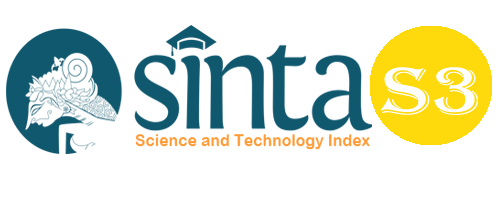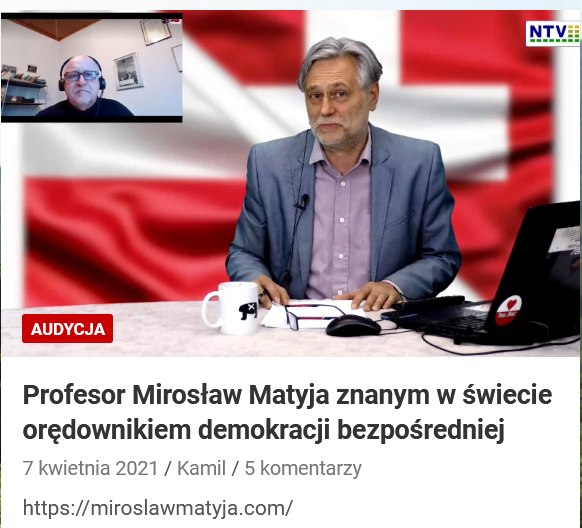The Effect of Forensic Auditor Skills, Forensic Auditor Techniques, Forensic Auditor Experience, and Technological Readiness on Fraud Detection
Abstract
The purpose of this study is to analyze the effect of auditor skills, auditor techniques, auditor experience, technology readiness, and auditor independence. Forensic auditors are increasingly being challenged to be able to detect fraud that is increasingly sophisticated and involves aspects of the latest technology. This research approach is quantitative. The sampling technique is incidental sampling. The population is forensic auditors scattered throughout Indonesia.The primary data collection technique is the survey method. The data analysis technique used SEM-PLS.The results showed that auditor skills, forensic auditor techniques, and experience of forensic auditors partially had a positive and significant effect on fraud detection. Meanwhile, auditor technology readiness, and auditor independence, partially have a negative and significant impact on fraud detection.
Keywords
Full Text:
PDFReferences
Afifah, U., Sari, R. N., Anugerah, R., & Sanusi, Z. M. (2015). The Effect of Role Conflict, Self-efficacy, Professional Ethical Sensitivity on Auditor Performance with Emotional Quotient as Moderating Variable. Procedia Economics and Finance, Vol. 31, 206-212. DOI: https://doi.org/10.1016/S2212-5671(15)01222-8.
Akers, M. D., & Gissel, J. L. (2006). What is Fraud and Who is Responsible? Journal of Forensic Accounting, Vol. 7 (1) , 247-256.
Amyar, F., Hidayah, N., Lowe, A., & Woods, M. (2019). Investigating the backstage of audit engagements: The paradox of team diversity. Account. Audit. Account. J., Vol. 32, 378-400.
Best, P., Buckby, S., & Tan, C. (2001). Evidence of the audit expectation gap in Singapore. Manag Audit J, Vol. 16 (3), 134-114. ISSN: 0268-6902.
Carcia-Blandon, J., Argiles-bosch, J., & Ravenda, D. (2019). Audit firm tenure and audit quality: A cross‐European study. Journal of International Financial Management & Accounting, Vol. 31(1), 35-64. DOI: https://doi.org/10.1111/jifm.12098.
Carpenter, T. D., & Reimers, J. L. (2013). Professional Skepticism: The Effects of a Partner's Influence and the Level of Fraud Indicators on Auditors' Fraud Judgments and Actions. Behavioral Research in Accounting, Vol. 25 (2), 45-69. DOI: https://doi.org/10.2308/bria-50468.
Cooper, D., Dacin, T., & Palmer, D. (2013). Fraud in accounting, organizations and society: Extending the boundaries of research. Accounting, Organizations and Society, 38, 440-457. SSRN: https://ssrn.com/abstract=2420064.
Desai, N. (2020). Understanding the Theoretical Underpinnings of Corporate Fraud . Vilkapa: The Journal for Decision Makers, Vol. 45 (1), 25-31. DOI: https://doi.org/10.1177/0256090920917789.
Habib, A., Wu, J., Bhuiyan, M., & Sun, X. (2019). Determinants of auditor choice. Review of the empirical literature. Int J Audit, Vol. 23 (2), 308-335. DOI: https://doi.org/10.1111/ijau.12163.
Hollow, M. (2015). Rouqe banking. A history of financial fraus in interwar Britain. Basingstoke: Palgrave Macmillan.
Hussin, S. A., & Iskandar, T. M. (2015). Re-Validation of Professional Skepticism Traits. Procedia Economics and Finance, Vol. 28 , 68-75. DOI: https://doi.org/10.1016/S2212-5671(15)01083-7.
Indrayanti, Chandrarin, G., & Supanto, F. (2021). The Influence of Audit Quality on Auditor Performance with Mediating Organizational Commitment and Organization Culture. Journal of Southwest Jiaotong University, Vol. 56 (2), 350-364. DOI: 10.35741/issn.0258-2724.56.2.28.
Ichsan, R. et al. (2021). Determinant of Sharia Bank's Financial Performance during the Covid-19 Pandemic. Budapest International Research and Critics Institute-Journal (BIRCI-Journal). P. 298-309.
Jasi, K. M., Nawawi, A., & Puteh Salin, A. S. (2016). Reduction of Audit Quality by Auditors of Small and Medium Size Audit Firms in Malaysia: A Case of Premature Sign-Off of Audit Documents. Journal of Accounting, Business and Management (JABM), [S.l.], v. 23, n. 2, 1-12. ISSN: 2622-2167.
Joudaki, H., Rashidian, A., Minaei-Bidgoli, B., Mahmoodi, M., Geraili, B., Nasiri, M., et al. (2016). Improving Fraud and Abuse Detection in General Physician Claims: A Data Mining Study. Int J Health Policy Manag, Vol. 5 (3), 165-172. DOI: https://doi.org/10.15171%2Fijhpm.2015.196.
Kanapickiene, R., & Grundiene, Z. (2015). The Model of Fraud Detection in Financial Statements by Means of Financial Ratio. Procedia - Social and Behavioral Sciences, Vol. 213 , 321-327. DOI: https://doi.org/10.1016/j.sbspro.2015.11.545.
Kochinev, Y., Antysheva, E., & Putintseva, N. (2021). Formalization of Analytical Procedures for Assessing the Risks of Material Misstatement in Financial Statements due to Fraud. SPBPU IDE '20: Proceedings of the 2nd International Scientific Conference on Innovations in Digital Economy: SPBPU IDE-2020 (pp. 1-5. DOI: https://doi.org/10.1145/3444465.3444532). Association for Computing Machinery.
Lim, Y., & Monroe, G. S. (2020). Analyst Coverage and Audit Fees: International Evidence. Journal of Accounting, Auditing, & Finance, Vol. 37 (2), 466-492. DOI: https://doi.org/10.1177/0148558X20928243.
Mohamed, N., Said, J., & Bakri, H. H. (2017). Mitigating asset misappropriation through integrity and fraud risk elements: evidence from emerging economies. Journal of Financial Crime, Vol. 24 (2), 1-16. DOI: 10.1108/JFC-04-2016-0024.
Olojede, P., Erin, O., Asiriuwa, O., & Usman, M. (2020). Audit expectation gap: an empirical analysis. Future Business Journal, Vol. 6 (10), DOI: https://doi.org/10.1186/s43093-020-00016-x.
Popova, V. (2012). Integration of Fraud Risk in the Risk of Material Misstatement and the Effect on Auditors' Planning Decisions. Journal of Forenxic Accounting Research, Vo. 3 (1), 1-47. DOI: 10.2308/jfar-52228.
Porcuna-Enguix, L., Bustos-Contell, E., Serrano-Madrid, J., & Labatut-Serer, G. (2021). Constructing the Audit Risk Assessment by the Audit Team Leader When Planning: Using Fuzzy Theory . Mathematics, Vol. 9(23), DOI: https://doi.org/10.3390/math9233065.
Razaee, Z. (2004). Restoring public trust in the accounting profession by developing anti-fraud education, programmes and auditing. Manag Audit J, Vol. 19 (1), 134-148. ISSN: 0268-6902.
Tommasetti, R., de Oliveira Leite, R., Maia, V. M., & da Silva Macedo, M. A. (2021). Revisiting the Accounting Fraud Components: A Bottom-Up Approach Using the Twitter Platform . SAGE Open, Vol. 11 (4), DOI: https://doi.org/10.1177/21582440211058190.
Toms, S. (2017). Fraud and financial scandals. In J. Wilson, S. Toms, A. de Jong, & E. Buchnea, Eds The Routledge Companion to business history (pp. 358-372). Abingdon and New York: Routledge.
Trompeter, G., Carpenter, T., Desai, N., Jones, K., & Riley Jr., R. A. (2013). A synthesis of fraud-related research. Auditing: A Journal of Practice & Theory, 32, 287-321. DOI: https://doi.org/10.2308/ajpt-50360.
van Driel, H. (2019). Financial fraud, scandals, and regulation: A conceptual framework and literature review. Business History, Vol. 61 (8), 1259-1299. DOI: https://doi.org/10.1080/00076791.2018.1519026.
Velte, P. (2022). The impact of external auditors on firms’ financial restatements: a review of archival studies and implications for future research. Manag Rev Q, DOI: https://doi.org/10.1007/s11301-022-00264-x.
Wilson, A., McNellis, C., & Latham, C. (2018). Audit firm tenure, auditor familiarity, and trust: effect on auditee whistleblowing reporting intentions. International Journa of Auditing, Vol. 22 (2), 113-130. DOI: https://doi.org/10.1111/ijau.12108.
Xiao, T., Geng, C., & Yuan, C. (2020). How audit effort affects audit quality: An audit process and audit output perspective. China Journal of Accounting Research, Vol. 13 (1), 109-127. DOI: https://doi.org/10.1016/j.cjar.2020.02.002.
Zhao, X., Yang, D., Li, Z., & Song, L. (2021). Multiple large shareholders and corporate fraud: evidence from China. Frontiers of Business Research in China, Vol. 15 (9), DOI: https://doi.org/10.1186/s11782-021-00106-9.
DOI: https://doi.org/10.33258/birci.v5i3.6223
Article Metrics
Abstract view : 109 timesPDF - 41 times
Refbacks
- There are currently no refbacks.

This work is licensed under a Creative Commons Attribution-ShareAlike 4.0 International License.

This work is licensed under a Creative Commons Attribution-ShareAlike 4.0 International License.

_.gif)

















_.gif)



